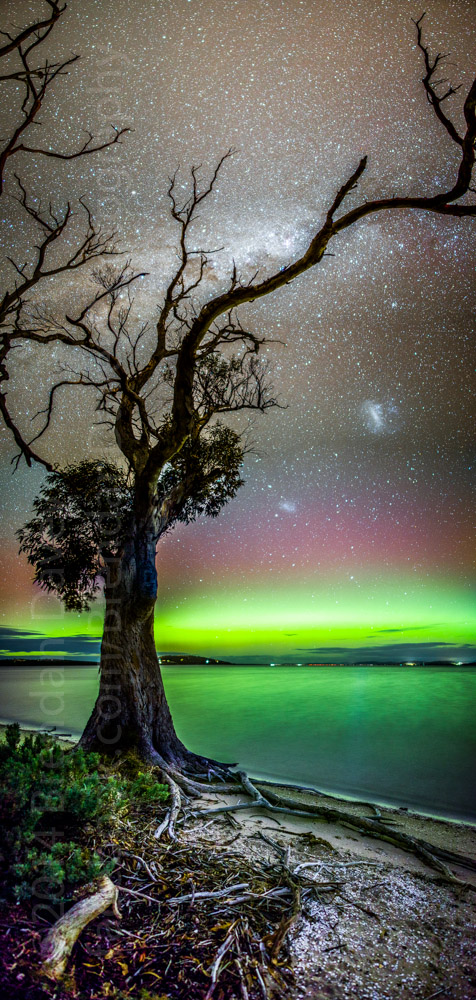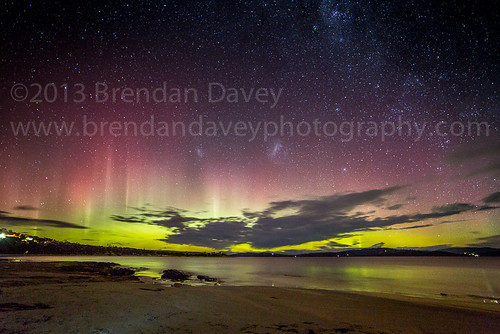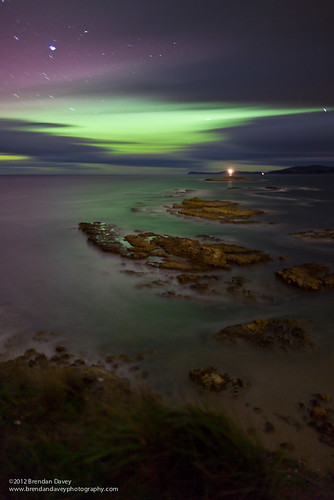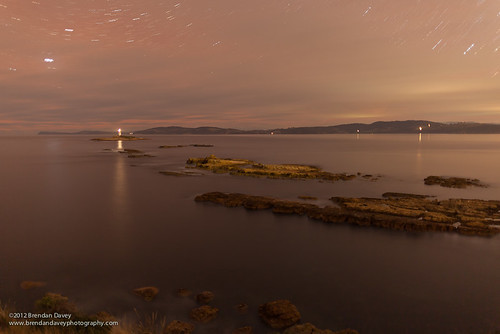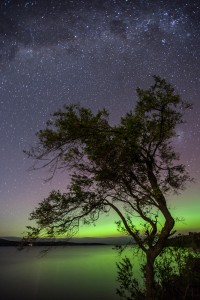 My experience with the Aurora.
My experience with the Aurora.
I have shot a few Auroras now, most at fairly low light levels when compared to those at very high or low latitudes. I have shot a nunber at around 42 degrees south from Tasmania, and here are my tips for shooting Auroras that are just visible to the eye.
Light, it’s all about light. The fastest glass is going to give you the best results, why? Auroras are funny things, large light curtains that slowly move and weave across the night sky, in order to get the best picture you need to “stop” or have as little movement in the curtains as possible. There are only two ways to do this while keeping your exposure short, either you increase your ISO or you open you lens f-stop to allow more light in. Increasing the ISO is not ideal as it adds more noise, and only the best cameras will have usable low light pictures at high ISO’s
The picture above was shot at ISO 800 for 2 mins at f4 with a 17-40mm, in this example you can just start to see start trails, and the aurora is flat with little variation across the color bands. f4 on this lens was the max f-stop for light. If however I had used a 24mm f1.4 I would have been able to reduce the time period by 3 stop or an exposure of 15 seconds @ f1.4 at ISO 800. This would have given the same overall exposure but allowed for more variation and exposed the ribbons better.
So, get the fastest glass you can afford, and this is sometimes a trade off with focus length. For example 16-35mm f2.8 v’s 24mm f1.4, the 24mm is going to allow a lot more light in, but will not be as wide as the 16-35, and the cheaper 17-40mm f4 is going to allow even less in. Another option is the Sigma 20mm f1.8 if you can handle it’s softness.
What else do I need to know? Well, don’t try shooting an aurora near other light sources, such as cities. If you moon is up, and all but a slither then forgot it, it’s going to wash your aurora shots out. Use a good tripod, I can’t stress it enough, don’t buy a cheap flexible tripod for low light photography. the slightest movement is going to wreck your shot. You can used ND grads, and they will help to even out brightness. Know where infinity is on your lens, as you may not be able to see enough to focus. Some cameras show stars in live-view zoomed in and you can focus on them, or a light source far in the distance.
